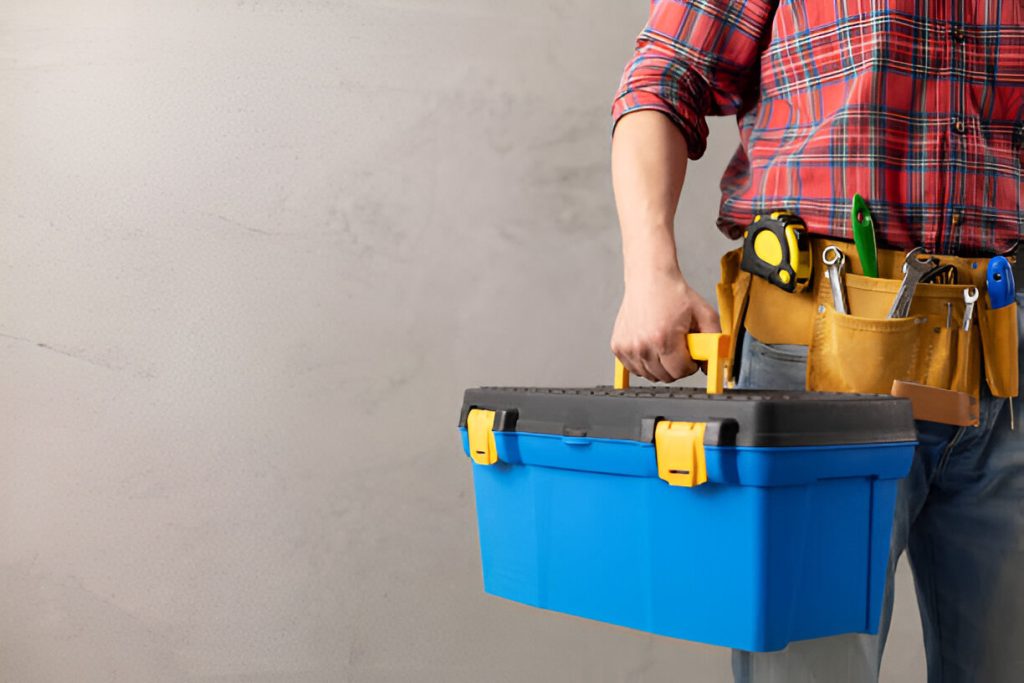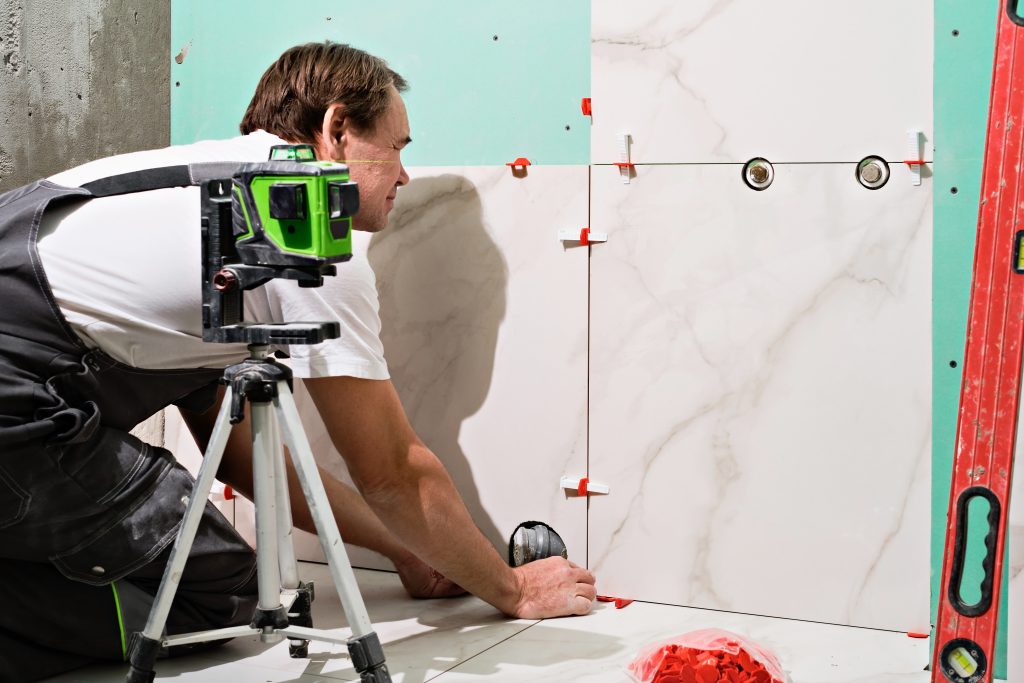Let’s say you’ve been dreaming of transforming your outdated bathroom into a modern oasis, complete with sleek tiles and a fresh new look. Well, you’re in luck because we’re here to guide you through the process and help you understand the factors that can impact the cost of tiling your small bathroom. From the size of the space to the type of tiles you choose, there are several considerations that will determine the final price. So, if you’re curious to know how much it will cost to tile your small bathroom and how to make the most of your budget, keep reading. You won’t want to miss our expert tips and advice on achieving the bathroom of your dreams without breaking the bank.
Average Cost of Tiling a Small Bathroom
The average cost of tiling a small bathroom ranges between $500 and $800, including both materials and labor. When considering tiling your small bathroom, you have a few options to consider. First, you can choose between DIY or hiring a professional. While doing it yourself may save you money, hiring a professional ensures a quicker and more efficient job. Secondly, the cost can vary depending on the size of your bathroom. Smaller bathrooms tend to cost less to tile compared to larger ones. Additionally, the material options you choose can impact the overall cost. Ceramic tiles are the most affordable, while natural stone tiles can be more expensive. If you’re looking to save on costs, consider removing old tiles yourself and sourcing materials independently. By following these tips and considering these factors, you can successfully tile your small bathroom within your budget.
Factors Affecting Bathroom Tiling Prices
Factors affecting the prices of bathroom tiling include the area to be tiled, the material of the tiles, and the size and shape of the room. Considerations related to size include the total area to be tiled, whether it’s just the walls, the floor, or both. The larger the area, the more expensive it will be. Material costs also play a significant role in determining the overall price. Different types of tiles, such as ceramic, porcelain, or natural stone, vary in price. Labor expenses are another factor to consider, as the complexity of the job and the time required can impact costs. Additionally, tile design options, such as mosaic or decorative borders, can increase the price. It’s important to note that tiling a bathroom can also have an impact on the property value, as it can enhance the overall aesthetic and functionality of the space. Taking all these factors into account will help you determine the cost of tiling your small bathroom.
Supply and Material Costs
When considering the cost of tiling your small bathroom, it is important to factor in the supply and material costs. The choice of tile materials can have a significant impact on the overall cost. Ceramic tiles are the cheapest option, while glass and slate are more expensive. Consider comparing prices per square meter rather than per tile to get an accurate idea of the cost. Additionally, the size and design of the tiles can also affect the price. Mosaic tiles are a cost-effective alternative to patterned border tiles. Another important consideration is whether to opt for DIY installation or hire a professional. While DIY projects can save on labor costs, professional installation ensures efficiency and proper protection from water damage. It’s also worth noting that the size of the bathroom will impact the cost, with smaller bathrooms generally costing less than larger ones. To save on costs, consider removing old tiles yourself and sourcing materials independently. Lastly, properly maintaining your tiles can prolong their lifespan, saving you money in the long run.
Additional Considerations for Bathroom Tiling
Consider the importance of proper preparation before tiling your bathroom. Preparing surfaces is crucial to ensure a smooth and long-lasting result. Here are some additional considerations to keep in mind:
- Tiling over existing tiles: If the existing tiles are securely fixed and relatively smooth, you can save time and money by tiling over them. However, it is important to ensure that the surface is clean and properly prepared before proceeding.
- Installing underfloor heating: If you’re planning to retile your bathroom floor, this is a great opportunity to consider installing underfloor heating. Underfloor heating adds comfort and luxury to your bathroom experience. The cost of installation will depend on the type of underfloor heating system you choose and the size of your bathroom.
- Wetroom installation: Transforming your bathroom into a wetroom can not only enhance the functionality of the space but also increase the value of your home. Wetrooms offer a modern and spacious design. It is advisable to consult with professionals for accurate cost estimates and to ensure proper installation.
- Tackling smaller tiling sections: If you’re looking to save on professional labor costs, consider tackling smaller tiling sections yourself. This can be a DIY project that allows you to personalize your bathroom and adds a sense of accomplishment. Just make sure to do your research, have the necessary tools, and take your time to ensure a professional-looking result.
Tips for Reducing Bathroom Tiling Costs and Maintenance
To reduce bathroom tiling costs and ensure easier maintenance, there are several tips you can follow. Consider whether you want to tackle the tiling project yourself or hire a professional. DIY projects can save on labor costs, but make sure you have the necessary tools and skills. If hiring a professional, obtain multiple quotes and consider installation services offered by material suppliers. Source tiles, grout, and adhesive independently to potentially save on costs. Instead of using expensive patterned border tiles, consider mosaic tiles as a cost-effective alternative. When it comes to maintenance, regular cleaning and proper care can extend the lifespan of your tiles. Replacing grout can also refresh the appearance of old tiles. Additionally, using cost-saving materials like ceramic or porcelain tiles, which are less expensive than natural stone options, can help reduce overall expenses. Lastly, if your existing tiles are securely fixed and relatively smooth, tiling over them can save on the cost of removing and disposing of the old tiles.
| Reducing Costs | Maintenance Tips |
|---|---|
| DIY vs professional | Regular cleaning |
| Cost-saving materials | Proper care |
| Alternative design options | Grout replacement |
| Tiling over existing tiles |
Cost of Bathroom Tiling
The cost of tiling a bathroom can vary depending on factors such as the size of the bathroom, the type of tiles chosen, and whether you hire a professional or do it yourself. Here are some key points to consider:
- Cost of tile materials:
- Tile materials range from £15 to £150 per square meter.
- Ceramic tiles are the cheapest option, while glass and slate are more expensive.
- Material costs may vary depending on the contractor or retailer.
- Labor costs:
- Hiring a professional tiler can cost £100-£250, depending on bathroom size.
- Hiring a contractor who works with a manufacturer or retailer can save money.
- DIY vs professional:
- Tiling can be a DIY project, but some homeowners prefer professional installation.
- Hiring professionals is recommended for large or complicated projects.
- Save on labor costs by doing the retiling yourself.
- Cost-saving tips:
- Remove old tiles yourself to save on labor costs.
- Dispose of tiles yourself to save on disposal fees.
- Source tiles, grout, and adhesive independently for potential cost savings.
- Tackle smaller tiling sections yourself to save on professional labor.
Considering these factors and cost-saving tips can help you estimate the cost of tiling your bathroom and make an informed decision about whether to hire a professional or tackle the project yourself.
Areas to Tile in a Small Bathroom
When tiling a small bathroom, it is important to determine which areas you want to tile for the most cost-effective and visually appealing result. Consider the walls, floor, or both, and think about areas prone to water damage, such as shower walls and above the sink. The tile layout and tiling patterns will also play a role in the overall design. You have various tile size options to choose from, ranging from small mosaic tiles to larger format tiles. Additionally, tile color choices can greatly impact the aesthetic of the bathroom, so consider the overall color scheme and desired atmosphere. Lastly, don’t forget to explore different grout options, as the color and type of grout can enhance or subtly change the look of the tiles. By carefully considering these factors and making informed choices, you can achieve a beautifully tiled small bathroom that fits your budget and personal style.
Size of the Bathroom and Its Impact on Cost
Consider the size of your bathroom as it plays a crucial role in determining the overall cost of tiling. The size of your bathroom will affect the amount of tiles needed, the labor required, and the cost of materials. Here are two scenarios to help you visualize the impact of bathroom size on cost:
- Small Bathroom: If you have a small bathroom, the cost of tiling can range from £500 to £1,000. With a smaller space, you will need fewer tiles, which can help reduce material costs. Additionally, the labor required to tile a small bathroom is usually less, resulting in lower overall costs.
- Large Bathroom: On the other hand, if you have a larger bathroom, the cost of tiling can exceed £2,000 and even go up to £5,000 with expensive materials. A larger bathroom requires more tiles and more labor, which can significantly increase the overall cost of the project.
To save on costs, you can consider DIY tiling, as it eliminates the need for labor expenses. Additionally, exploring budget-friendly materials and tile design options can help you achieve a cost-effective bathroom renovation. Remember to carefully measure your bathroom and accurately calculate the required materials to avoid any discrepancies in cost estimates.
Cost of Materials for Tiling a Small Bathroom
To tile a small bathroom, you will need to consider the cost of materials involved in the project. Tiling materials can range in price depending on the type and design you choose. Ceramic tiles are the most budget-friendly option, while glass and slate tiles tend to be more expensive. When purchasing tiles, it’s important to buy about 10% more than needed to account for wastage and breakages. Comparing prices per square meter rather than per tile can help you find the best deal. Another cost-saving tip is to source tiles, grout, and adhesive independently, as this can potentially save you money.
In terms of installation techniques, you have the option of DIY or professional installation. Hiring a professional tiler can ensure a high-quality and efficient job, but it will come at a higher cost. On the other hand, DIY projects can save on labor costs, but require purchasing tools and personal protective equipment.
When deciding on the cost of materials for tiling a small bathroom, it’s important to consider your budget and weigh the pros and cons of DIY versus professional installation. By exploring different tiling materials, installation techniques, and budget-friendly options, you can find a solution that fits both your style preferences and financial constraints.
Labor Costs for Tiling a Small Bathroom
Labor costs for tiling a small bathroom can vary depending on the size of the bathroom and whether you choose to hire a professional or do it yourself. Here are some key points to consider:
- Labor Efficiency:
- Hiring a professional tiler can ensure efficient and timely completion of the project.
- Professionals have the expertise and tools to work efficiently, saving you time and effort.
- Cost Saving Techniques:
- DIY tiling can save on labor costs, but it requires patience and precision.
- Consider tackling smaller tiling sections yourself to save on professional labor.
- DIY vs Professional Tiling:
- Hiring a professional is recommended for large or complicated projects.
- DIY projects can be cost-effective, but make sure you have the necessary tools and knowledge.
- Timeframe for Tiling a Small Bathroom:
- Tiling a small bathroom typically takes 1-4 days, depending on the complexity of the job.
- Impact of Bathroom Layout on Labor Costs:
- The layout of the bathroom, such as the presence of features like shower walls, can impact labor costs.
- Protecting areas prone to water damage may require additional labor and materials.
Consider these factors when determining the labor costs for tiling your small bathroom. Whether you choose to hire a professional or take on the project yourself, make sure to plan accordingly and budget for the necessary time and resources.






